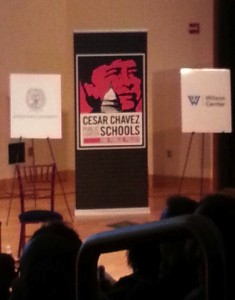Where’s the first place you would go to hear updated information on education? What’s the source that you trust the most? What was the last educational topic you heard about in the media? These are all questions that were raised by educational advocate Andrew R. Campanella in his report Leading The News: 25 Years of Education Coverage.
Campanella analyzed the coverage of K-12 education in the media over the last 25 years, and he found that education coverage is declining, with only 4 percent of Americans saying that education was the most important topic to them in 2014.
Local television is where I hear about education the most and it’s my go-to source, and also my most trusted source, coinciding with what others said in the report. Campanella found that local coverage of education is on the rise. In fact, he saw that the highest percentage of mentions of education-related stories focus on sports. The report found that 13.6 percent of local, regional, and state coverage focuses on athletics. Sports are an attention grabber and local news stations know that sports are more interesting for some than hearing about stories that focus on curriculum, budgets or reforms that may have taken place. Unfortunately, focusing on sports takes away from teaching the general public about those important issues in education that affect how their children are learning.
The study also revealed that when education is mentioned in articles, they are almost always focused on a specific policy. In my personal experience, one of the few policies that I have seen written about frequently in news articles is No Child Left Behind (NCLB). NCLB is the “poster child” for education and it’s pushed heavily almost everywhere, and if you were a millennial child you experienced it first












